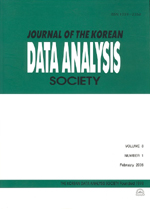국내 혈액투석환자의 우울중재프로그램에 대한 메타분석
Effects on Depression Intervention Programs of Hemodialysis Patients in Korea : Meta-Analysis
- 한국자료분석학회
- Journal of The Korean Data Analysis Society (JKDAS)
- Vol.14 No.5
-
2012.102513 - 2528 (16 pages)
- 45

본 연구는 국내에서 혈액투석 환자를 대상으로 시행된 우울중재프로그램의 효과 연구에 대한 질 평가 및 메타분석을 시행하여 우울중재프로그램의 효과를 확인하고, 우울중재 방법 간의 효과를 비교하기 위하여 수행되었다. 분석대상으로 선정된 논문은 총 8편이었고, 모두 비동등성 대조군 전후설계 연구였으므로 비무작위 연구를 평가하기 위해 개발된 논문의 질평가 도구(methodological index for non-randomized studies: MINORS)를 이용하여 질평가를 시행하였다. 자료의 분석은 MIX 2.0 Pro version 2.0.1.4를 이용하였다. 연구의 질 평가 평균 점수는 18.1점이었으며, 중재프로그램의 우울에 대한 효과크기는 -0.39(95% CI=-0.69, -0.08)로 통계적으로 유의한 우울감소 효과를 보였다(p=.013). 중재 특성에 따라서는 30분 이상, 총 9회 이상, 3주 이상의 중재를 제공하는 경우 보다 효과적이고 통계적으로 유의한 우울 감소 효과를 보였다. 중재 유형별로는 음악요법과 아로마요법은 우울에 효과가 있었으나, 유머중재는 효과가 없었다. 이에 투석환자의 우울 감소를 위한 중재프로그램 개발시 본 연구 결과를 활용할 수 있을 것으로 기대된다.
Purpose: The purpose of this study was to systematically evaluate the effects of depression intervention programs on depression of hemodialysis patients in Korea. Methods: Fifteen studies for meta-analysis were extracted from electronic databases through NSL, KERIS, KISS, DBpia, KISTI, KMbase. The selected studies had nonequivalent control group pretest-posttest design and reported statistical value to calculate the effect size (ES). All included studies were assessed their quality using MINORS. We calculated the standardized mean ES and 95% CI of included studies using MIX 2.0 PRO. Results: The overall mean ES of depression intervention programs was -0.39 (95% CI=-0.69, -0.08), which revealed a minor and significant effect (p=.013) and reduced depression. The studies in music therapy, more than half an hour per session, more than three-week intervention period, and more than the nine-session intervention showed more effective than other types of intervention. Conclusion: The cumulative evidence suggests that the use of depression intervention programs has a minor and positive effect on decreasing the depression in hemodialysis patients in Korea.
1. 서론
2. 연구방법
3. 결과
4. 논의
5. 결론
참고문헌
(0)
(0)